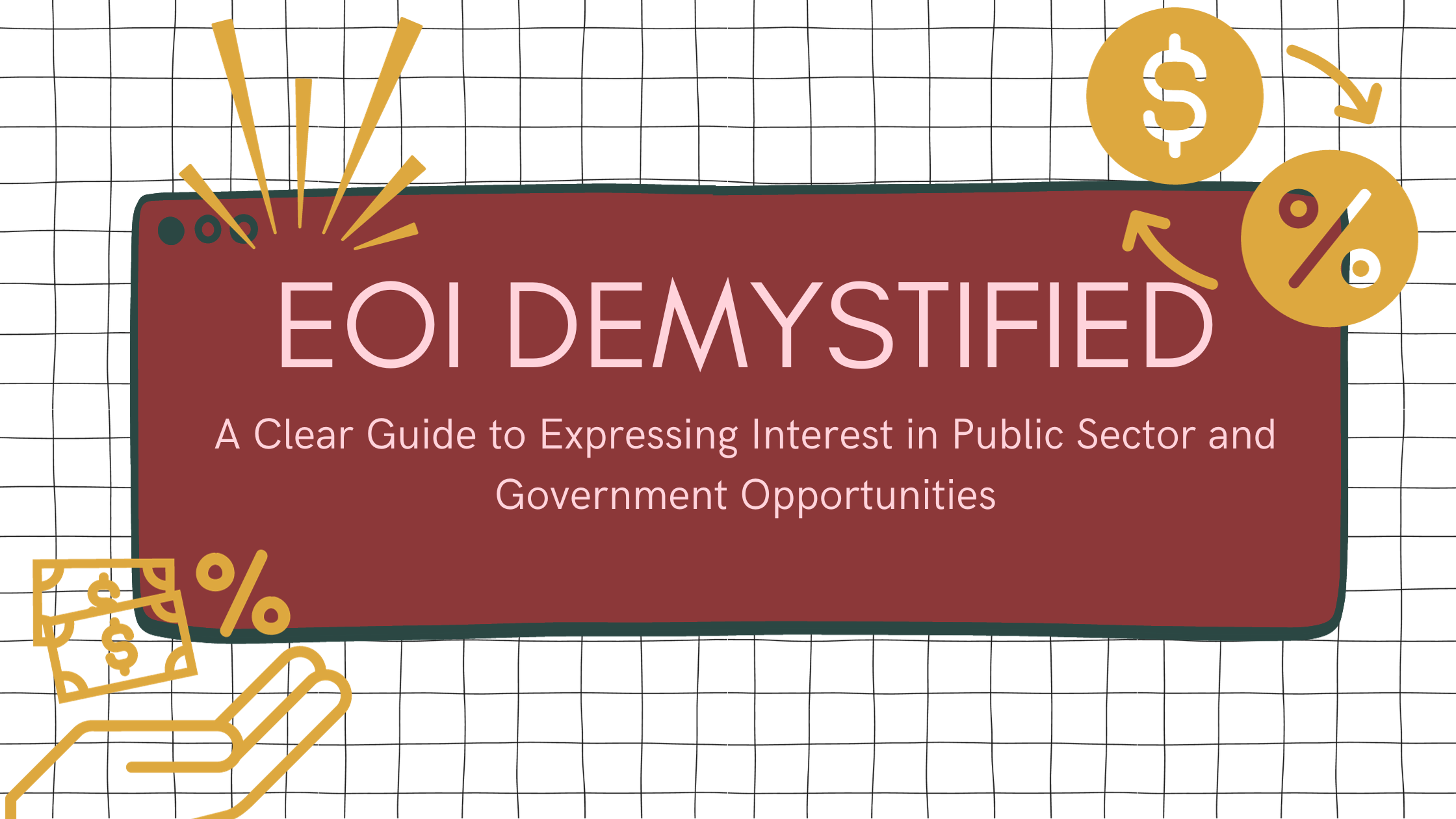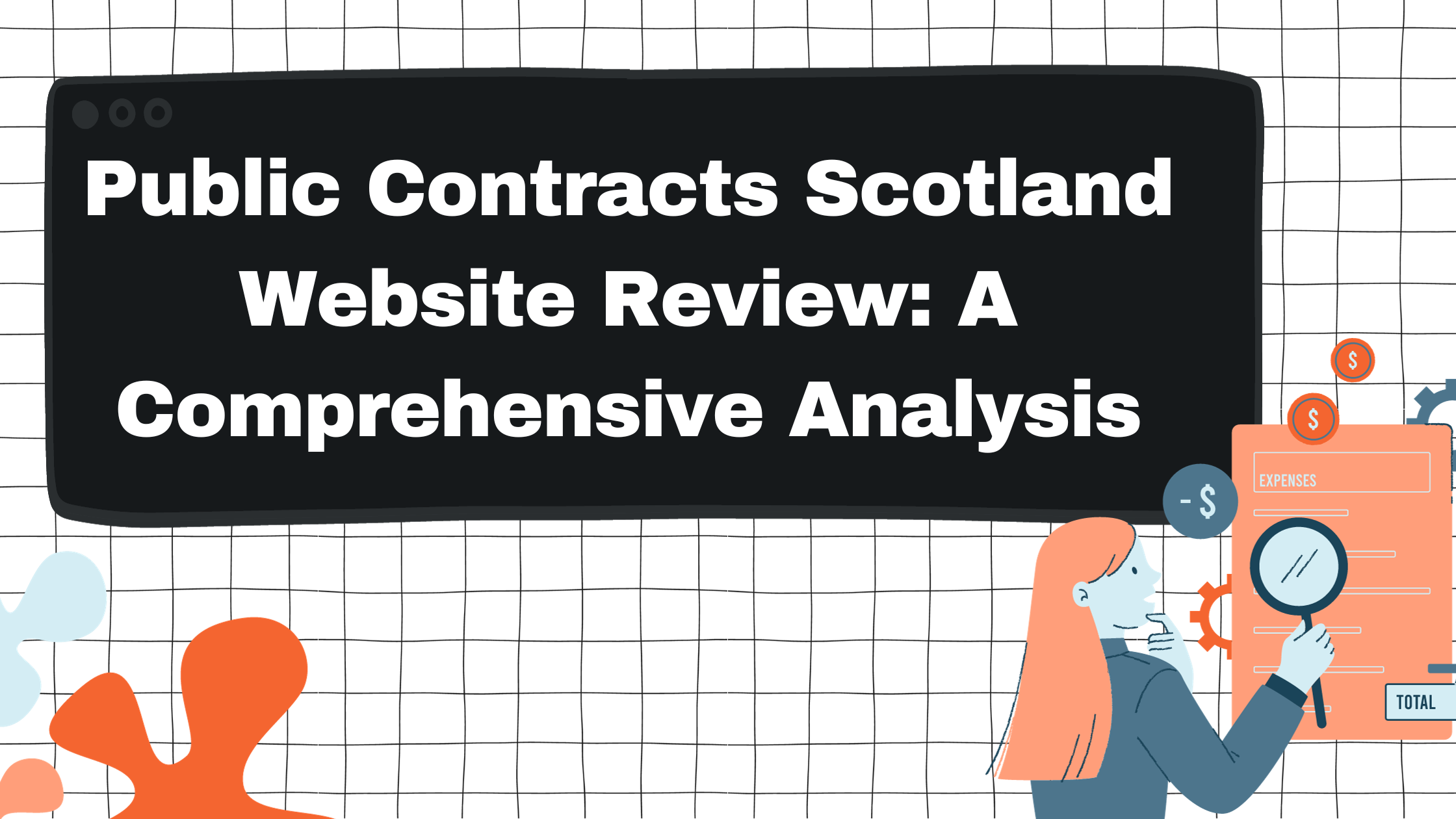Enhancing Business Efficiency with Professional RFP and Proposal Writing Services

Need Help with Your Bid?
Get in touch by filling out the form and one of our advisors will be in contact.
Contact UsThe Rise of RFP Creation Software: Streamlining Business Procurement Processes
In my experience, the adoption of RFP (Request for Proposal) creation software marks a significant shift in how modern businesses approach procurement and project planning. These tools epitomize the technological advancement's influence on streamlining complex processes. My understanding is that by leveraging such software, companies are able to craft and distribute proposals that are not only consistent and comprehensive but are done so with remarkable efficiency.

The transformation brought about by RFP software is notable; it optimizes a formerly cumbersome process prone to human error and extensive time commitment. As someone who has observed this shift, it's apparent to me that businesses are increasingly recognizing the strategic value of these tools. The right software can integrate seamlessly with existing business systems, bringing about a synergy that enhances overall productivity.
Key Takeaways
- RFP creation software significantly increases efficiency in the procurement process.
- Strategic integration with business systems enhances overall productivity.
- Choosing the right RFP solution is crucial for optimizing business operations.
The Evolution of RFP Software
The landscape of RFP (Request for Proposal) management has significantly transformed with the adoption of software solutions tailored to increase efficiency and accuracy.
From Manual to Digital
When I consider the history of RFPs, I observe a distinct shift from manual, paper-based processes to digital platforms. Initially, RFPs were created, distributed, and evaluated using paper documents, which was time-consuming and prone to human error. The adoption of digital RFPs has dramatically streamlined this process, ensuring that all information is centralized and easily accessible.
Key Technological Advances
A pivotal enhancement in RFP software includes the integration of automation tools. These tools have facilitated the generation of documents and the collection of responses, reducing the administrative burden significantly. Furthermore, the use of analytics has become central in informing decisions, with some reports indicating a 40% increase in the use of analytics within digital RFP solutions. This underscores the critical role of data in effective procurement strategies.
Vendor Response Management
I've noticed that managing vendor responses has also become more sophisticated with RFP software. These platforms enable users to quickly categorize, evaluate, and communicate with vendors, ensuring that the response process is both efficient and comprehensive. The shift from email-based questionnaires to fully integrated response management systems has made scaling the RFP process much simpler for organizations of all sizes.
Optimizing the RFP Process
In my experience, the key to enhancing the efficacy of the Request for Proposal (RFP) process lies in leveraging technology to streamline workflow, enhance collaboration, and simplify vendor engagement. I'll walk through how RFP software has become fundamental to achieving these objectives.
Streamlining Workflow
I found that RFP software significantly reduces the time I spend on each project by automating repetitive tasks. Features like templates and auto-fill capabilities cut down the hours I used to dedicate to drafting documents. Now, I can track the progress of multiple RFPs in real-time, ensuring that no detail is missed. For example, I create a structured timeline for each RFP, set up reminders for critical milestones, and receive updates on task completions鈥攁ll within the software.
Enhancing Collaboration
Effective collaboration is central to successful RFP management. Through RFP software, I establish a centralized platform which enables my team to work on the RFP simultaneously. We can share comments, assign tasks, and make real-time edits. This shared environment not only increases transparency but also ensures every team member is aligned on the project requirements and deadlines. With everyone contributing their expertise, the end result is a more comprehensive and competitive RFP.
Simplifying Vendor Engagement
Finally, engaging with vendors is a critical component of the RFP process. I utilize RFP software to simplify this step by organizing vendor communication within a single interface. This means I can send queries, receive responses, and compare proposals side by side without juggling between multiple emails and documents. Moreover, these platforms often include scoring systems that help me evaluate vendors objectively, based on the key criteria established in the RFP.
Strategic Benefits for Businesses
In my experience, the adoption of RFP creation software streamlines processes and strategically advantages businesses in several key areas.
Improving Win Rates
RFP creation software significantly enhances my ability to submit compelling proposals. By employing intelligent templates and leveraging detailed insights, I am able to focus on quality over quantity, targeting RFPs that align with my business's strengths. The associated increase in win rates is not just a theoretical advantage. It's an operational reality. For instance, with a refined RFP process, I can boost my average win rate which, according to Responsive, hovers around 45% for many businesses to even higher levels by concentrating on winnable and profitable opportunities.
Securing Quality Vendors
When I use RFP software, my vendor selection process becomes more nuanced and effective. It allows me to conduct comprehensive vendor risk assessments systematically, ensuring that the vendors I engage with have the requisite capabilities and reliability. This leads to forming partnerships with quality vendors that add value to my business and mitigate potential risks.
Data-Driven Decision Making
The use of analytics and reporting features within RFP software furnishes me with actionable data for informed decision making. I gain visibility into my RFP performance metrics and can make adjustments based on solid data rather than guesswork. This data-driven approach informs my strategies, from identifying market trends to understanding my competitive position. Consequently, the insights accrued from RFP360's e-procurement tools reveal the profound impact of leveraging digital solutions for enhanced business intelligence.
Integrating RFP Software with Business Systems
Implementing RFP software is a strategic move that necessitates careful coordination with existing business systems. Effective integration can enhance both efficiency and efficacy in proposal management processes.
HR and Procurement Synergy
In my experience, integrating RFP software bridges the gap between human resources (HR) and procurement teams. This synergy is critical as HR often aids in defining the scope of work and requirements for services, which procurement then uses to source through RFPs. The right software can streamline communication, allowing these departments to collaborate on crafting precise RFPs that align with the company's talent needs.
- Key Functions:
- Collaborative workflow creation
- Centralized communication platform
Technology and Service Integration
I've noted that incorporating RFP software often necessitates the use of application programming interfaces (APIs) to allow a seamless flow of data across various business systems. By integrating with customer relationship management (CRM) and enterprise resource planning (ERP) systems, I can ensure that all proposal data is consistent and up-to-date, which significantly economizes the time spent on administrative tasks.
- Integration Checklist:
- Determine compatibility with existing CRM/ERP systems
- Utilize APIs for bidirectional data exchange
Security and Compliance
Security is paramount, and I always prioritize it when integrating RFP software. It's essential to ensure the software adheres to rigorous compliance standards and internal security policies. This includes validating that the software can manage sensitive data securely and that all data transfers are encrypted.
- Security Measures:
- Encrypted data transfer
- Role-based access control
Throughout the process, my focus remains on optimizing the procurement cycle, maintaining data integrity and compliance, and enabling HR to leverage technology for better resource management.
Choosing the Right RFP Solution
When I set out to integrate RFP software into my business processes, I scrutinized several key aspects to ensure the chosen solution met all my operational needs effectively.
Comparing Leading Platforms
I began by evaluating top RFP solutions such as RFPIO, Loopio, and RFP360. I looked at their specific features to understand how each platform might serve my company.
- RFPIO is praised for its robust response management and collaboration tools.
- Loopio excels with a strong emphasis on ease of use.
- RFP360 offers comprehensive platforms that cater to a variety of RFP scenarios.
Customization and Scalability
Next, I examined how well these platforms could adapt to my business's evolving demands. Customization meant tailoring the software features to suit my unique processes:
- RFPIO and PandaDoc both deliver high levels of customizability.
- I evaluated whether these tools could scale up effectively as my business grows, without requiring an overhaul of the system.
Cost-Benefit Analysis
Finally, I performed a detailed cost-benefit analysis to ensure the investment made sense for my business. While some solutions, like PandaDoc, offer a free version, I had to consider what features are limited versus paid tiers.
- A comparison of pricing information revealed that while Loopio may have a higher initial cost, the efficiency gains could justify the expense.
- I also took into account the long-term savings in man-hours and the potential for increased response quality, impacting the win-rate of my proposals.
The result was a carefully selected RFP software that promised to streamline my proposal process and respond more effectively to RFPs.
Frequently Asked Questions

In this section, I'll cover some of the most pressing questions businesses have about RFP creation software, such as how it streamlines procurement, the essential features it offers, its influence on vendor selection, and the business advantages it provides. We'll also examine its recent evolution and market significance.
How does RFP software streamline the procurement process?
RFP software aids in organizing and automating the solicitation process, as highlighted in the RFP process guide by RFP360. By creating a centralized platform for all RFP-related activities, it ensures that everything from creating questionnaires to collecting responses is handled efficiently.
What are the key features to look for in RFP creation software?
Key features of RFP creation software typically include a collaborative workspace, a customizable template library, and analytics tools, according to advice from Loopio's blog. These features help ensure that proposals are polished, compliant, and easy to evaluate side by side.
How does RFP creation software impact vendor selection?
By using RFP software, businesses can maintain a transparent and consistent method for evaluating vendors. Informed by insights from ClickUp's blog, this software also allows for objective scoring of proposals, ensuring the best vendor match for the project requirements.
What are the benefits of using an RFP platform for businesses?
RFP platforms provide several benefits including time savings, improved compliance with industry standards, and a stronger alignment with business objectives. BMC Software outlines how businesses leverage these platforms for clearer communication of project requirements to potential vendors.
In what ways has RFP creation software evolved over recent years?
Recent advancements have integrated artificial intelligence to automate repetitive tasks, as described by ProcurePort's blog. RFP software has also become more user-friendly, with features that cater to the varying experience levels of its users.
How significant is the RFP market in terms of size and growth?
The RFP market is experiencing substantial growth, with more businesses adopting these tools as they recognize the efficiency gains and cost savings they present. While exact figures fluctuate, the trend is towards increased adoption and technological refinement, which underscores the market's expansion.
Ready to start your search?
Get in touch by filling out the form to the right and one of our advisors will curate a personalised selection for you.
Get in touchBlogs. Guides. Helpful advice.

Mastering Proposal and RFP Writing for Government and Public Sector Opportunities

Proposal and RFP Writing Services: Enhancing Public Sector Tender Outcomes

.svg)